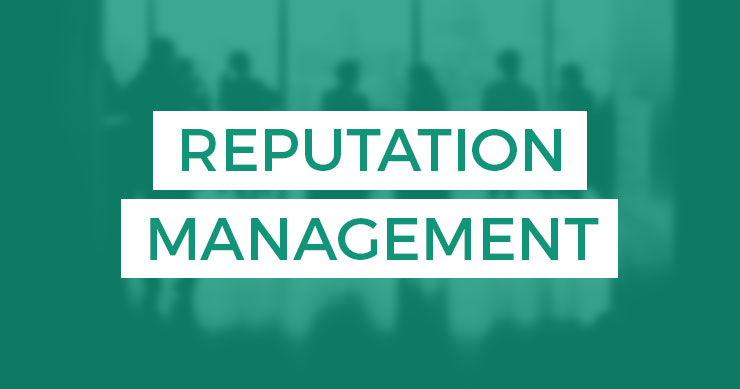 There’s literally zero minutes between sessions and ALL the sessions are running over and starting late so….we’re just hopping right in there. I also still feel like I might die, in case you were wondering up. Michael Dorausch is threatening to Lysol the table if I don’t stop coughing and sniffling. No love for the sick livebloggers.
There’s literally zero minutes between sessions and ALL the sessions are running over and starting late so….we’re just hopping right in there. I also still feel like I might die, in case you were wondering up. Michael Dorausch is threatening to Lysol the table if I don’t stop coughing and sniffling. No love for the sick livebloggers.
Back to the session: Up on stage are Sean Jackson, Kenny Hyder, Tony Wright, and Krista Neher. Let’s do this thing.
Brand Management and Sales
Unless you’re advocating, protecting and defending your brand, you don’t have a strong one. Strong brands have an impact on any organization because they make sales and costs more efficient. With a strong brand it’s easier for customers to move through every stage of the sales funnel. Many times in organizations, the CFO will come up and say, “what are we getting from brand management?” It’s important to integrate brand management into the sales process. If you align your effort back to sales it makes it more effective.
8 Stages of the Sales Funnel
- Category Awareness
- Brand Awareness
- Brand Consideration
- Brand Preference
- Purchase Intent
- Purchase
- Customer Retention
- Advocates
Three elements of online brand management – monitor. engage. advocate.
Criteria for Engaging
- Is it important to my current effort? Will it help you move to the next stage?
- Can I engage? Do you have the resources to provide?
- Can I sustain? Can I keep it going for frequency and reach.
There are many ways to monitor: Raven. Trackur. Google Alerts. The problem isn’t finding a tool. The problem is what to look for. Certainly there are things related to proper names. Then you have to consider intent AND sentiment. You have to find the tool that allows you to monitor beyond just proper names.
If you are setting your monitoring up right, engagement is crucial. However, it’s a process-oriented approach. It’s an investment of time, effort and money. If you’re going to do it, you need to determine rules, procedures and responsibilities. What stages of the funnel will you respond to? When will you respond? Who will respond? How will you respond?
Once you have your engagement model down, you can start advocating. Advocating is a much softer approach. It’s a function of getting your message out. The goal of every message is to move them to the next stage of the buying process. Acknowledge their point AND move viewers toward the next stage. Be honest. You can use pre-made content like lists, How To guides and reviews.
Be aware of bot programs. There are a lot of tools out there that allow you to rapidly respond to people. Do not use them unless you are 100 percent confident that your monitoring includes sentiment. Response and content MUST align to Sales Stage of the receiver.
Reverse the Sales Funnel Against Your Competition
- Set your monitoring for the competition brand. Any time someone mentions that other brand, mention yours.
- Focus on Brand Awareness and Brand Consideration issues.
- Respond with reviews, industry opinion, exclusive offers, etc.
- Your goal is to move them to YOUR brand preference.
Next up is Kenny Hyder.
So your SERP has bad results…you have a bad review on Yelp, there’s a negative news article, there’s a blog rant from some jerk (holla!) or you have a competitor that purchased yourcompanynamesucks.com. You need to clean these things up because if someone searches for you and sees a bad post about you, they’re going to read that first. And then you’re basically screwed.
If you have a brand that you own, there’s no reason why you can’t dominate the first page of results if you have your focus together.
Tools you can use:
- Your own Web site.
- Blog
- Social Media Profiles
- Niche Sites/Directories
Blogs
Easily rank for brand queries. Individual posts can be optimized to rank for specific issues/topics. Launching an Official Blog lets you manage and control all the content coming out for your brand.
Tips:
- Be resourceful
- Have a schedule. Post with purpose.
- Understand how blogs and SEO intersect.
Social Media Profiles
There are hundreds and hundreds of social media profiles out there and they’re great for ranking. There’s a social media site for everything. There’s a site for music, basketball, cooking, wine, beer, etc. Whatever industry you’re in, there’s a site for that. [I intend on using the “there’s a site for that” line as often as I can for the rest of the day.] Social media sites are designed for ranking. Use a site like KnowEm to get signed up on all of them.
Tips:
- Don’t set it and forget it. Engage and be interactive
- Build links to help them rank.
- Remember your purpose.
Key sites: Twitter, Facebook, YouTube, LinkedIn, Naymz, Flickr
Niche Social & Directories
They’re highly relevant and easy to get into. They’re also easier to dominate. Adds clout to your brand
Tips:
- Set yourself up as an authority. You want to be a resource to everyone else in your industry. Make yourself the go-to person
- Be useful and interactive.
- Use these sites to rank well for the bottom of page one.
Next up is Tony Wright.
“If I tell my FB friends about your brand, its because I like my friends – not because I like your brand. ” Touche.
Why do people complain online. [STOP JUDGING ME!] They want to be part of a community and recognition from their peers. [Yeeeeah, we do.]
Why do people listen to online complainers? Users put great trust in their social networks. One half said they considered information shared on their networks when making a decision. That proportion was higher among users of 18 to 24.
Why should you care? There were nearly 116 million US user-generated content consumers in 2008, along with 82.5 million content creators. Both numbers are going to climb significantly.
So what do you do? You have to have a plan.
- Who should be involved
- What you should consider
- Brainstorming the worst case scenario
- What will your employees do
- How will you evaluate a crisis
- How will you quantify success
Who should be Involved?
- Marketing: They’re the foot soldiers.
- IT: The minute a crisis breaks and your server crashes, you’re in trouble. When 9/11 happened, the American Airlines site crashed. They needed to re-route things ASAP.
- Upper Management: If people feel they have input, then you’ll have buy in.
- Crisis Consultants: Having someone who understands the landscape of what’s going on and understands what can happen, is incredibly valuable. You need someone like that in house.
- HR: They have to be involved.
- Representatives from the rank and file: If they know what’s going on, they’re less likely to go rogue and do something stupid.
- Unions: Need buy in on negotiations.
What to Consider:
- Online and offline: Pay more attention to online, it’s harder.
- Monitoring : You must monitor your brand at all times.
- Mock scenarios: How will you handle each? Think worst case scenarios.
- Technical execution of responses
- Respond Responsibly
Brainstorming Worst Case Scenario
Ideally, your mock worst case scenario will have elements of all aspects involved. Use the worse case scenario as as template for the plan. Develop several based on different criteria, such as physical disasters, financial disasters, ethic disasters, etc.
What will your employees do?
Internal communications is paramount in all crisis communication. Policies must be laid out in advance to advise employees on how they can respond in a crisis.
Employee representatives should be in on the planning to have “ownership” of the plan — especially when Union is involved. Honesty and accountability are the best policies with employees and vendors. If you’re not transparent a lie will come back and kick you in the butt.
Crisis Evaluation
- What is a crisis to the CEO may not be a crisis. Tie the CEO up in the corner. [I’M COMING FOR YOU, RAE!]
- Look at the following factors:
- Potential reach of crisis
- Potential revenue loss from crisis
- Is it a game changer? Is this going to alter your business?
- Viral likelihood? Will this continue to haunt the company for years to come?
How will you quantify success?
- When is a crisis over? Sometimes its obvious, sometimes not.
- Continue monitoring
- Give your strategy the time it needs to work.
- Always take note of what a crisis did to the company’s reputation and communicate that with all internal sources.
Reputation, Influence and Branding
Reputation, branding and influence are not the same thing but they are connected. Start working on reputation. The others will come if your reputation is good. Don’t let good branding get in the way of a good reputation. Don’t be the logo police. Monitor for your reputation. Create a formula for keeping your reputation solid – deal with snags as they come.
Next up is Krista.
Like it or not, you have a brand. A brand is a collection of symbols, experiences and associations connected with a product, a service, a person or any other artifact or entity. A brand is in the eyes of the customer. Brand equity is what your brand stands for n the hearts and minds of your audience.
The Internet Changed Branding
- Pre-Internet: brands controlled the message. One way communication.
- Internet: Everyone has a voice. They’re all talking about you and building your brand.
All the branding won’t do anything if your product still sucks.
Principles for How To Manage Your Brand Online
The walls are falling. There’s a lot more transparency within companies. There used to be rules about who could talk and who couldn’t. Those lines are now blurring. You need to be consistent. To be transparent.
Set clear expectations. There are LOTS of social media sites out there right now. Set expectations for where you’re going to play. A lot of companies have set a high bar with Twitter by responding every second of the day. You may not be able to do that.
Responding to people who love you
Show others that you care. Build a tribe of passionate users, they will defend your brand for you. She talks a bit about the Motrin debacle and how people defended their brand. If people are talking about you, it’s because they want to be associated with your brand or seen as an expert about you. Engage them.
Having people defend you on your behalf is more powerful than anything you could ever say. You don’t have to give people something free if they mention your brand. That may cheapen the relationship. You have to think about the motivation behind it. If they said they like your brand, they like your brand.
Responding To Negative Comments
Try and understand the root of the issue. And then handle that root. Instead of trying to just quiet people, try to resolve their issue. If your product sucks and you KNOW it sucks, fix it.
Don’t oppose or try to censor people. Convey a clear, gentle, and friendly image. Respond directly to the issues so that whomever reads the complains also reads the positive reviews.
Six Tips for Dealing With Negativity
- Humanize your Brand: It’s easier to hate a company than a person.
- Listen
- Thank them for caring: By thanking someone and offering to work with them, you can turn it around. Show openness in dealing with the complaint or issue.
- Be Transparent and Explain: Often a friendly explanation can help.
- Build a Community of passionate defenders:
- Know when to walk away: If someone is flaming your brand, realize when you’re not going to make any headway.
We’re so over time that there’s not even Q&A. Ah, I gotta run! Please be more forgiving of crazy spellings and typos today, eh? We’re running at warped speed.


